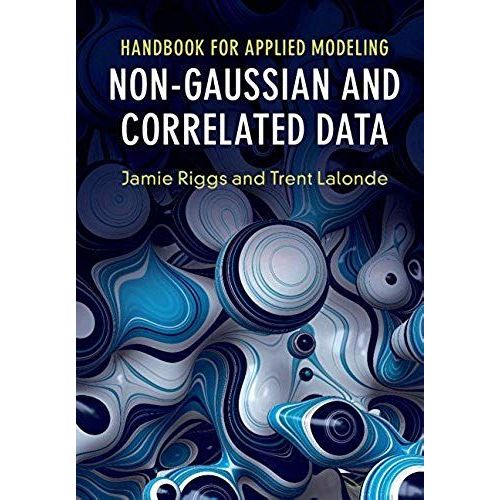

Handbook for Applied Modeling: Non-Gaussian and Correlated Data - Riggs, Jamie D
- Format: Relié
- 228 pages Voir le descriptif
Vous en avez un à vendre ?
Vendez-le-vôtre- Payez directement sur Rakuten (CB, PayPal, 4xCB...)
- Récupérez le produit directement chez le vendeur
- Rakuten vous rembourse en cas de problème
Gratuit et sans engagement
Félicitations !
Nous sommes heureux de vous compter parmi nos membres du Club Rakuten !
TROUVER UN MAGASIN
Retour

Avis sur Handbook For Applied Modeling: Non - Gaussian And Correlated Data Format Relié - Livre
0 avis sur Handbook For Applied Modeling: Non - Gaussian And Correlated Data Format Relié - Livre
Donnez votre avis et cumulez 5
Les avis publiés font l'objet d'un contrôle automatisé de Rakuten.
Présentation Handbook For Applied Modeling: Non - Gaussian And Correlated Data Format Relié
- LivreAuteur(s) : Riggs, Jamie D - LaLonde, Trent LEditeur : Cambridge University PressLangue : AnglaisParution : 01/07/2017Format : Moyen, de 350g à 1kgNombre de pages : 228Expédition :...

Résumé :
This compact, entry-level Handbook equips applied practitioners to choose and use core models for real-world data - with R and SAS.
Biographie:
Jamie D. Riggs is an adjunct lecturer in the Predictive Analytics program at Northwestern University, Illinois. She specializes in the statistical issues of solar system cratering processes, solar physics, and galactic dynamics, and has collaborated with researchers at the Los Alamos National Laboratory, New Mexico and the Southwest Research Institute, Texas. She has held technical and managerial positions at Sun Microsystems, Inc., National Oceanic and Atmospheric Administration, and the Boeing Company, where she applied advanced statistical designs and analyses to manufacturing and business problems. She is the Solar System and Planetary Sciences Section Head of the International Astrostatistics Association.
Sommaire:
1. The data sets; 2. The model-building process; 3. Constance variance response models; 4. Non-constant variance response models; 5. Discrete, categorical response models; 6. Counts response models; 7. Time-to-event response models; 8. Longitudinal response models; 9. Structural equation modeling; 10. Matching data to models.
